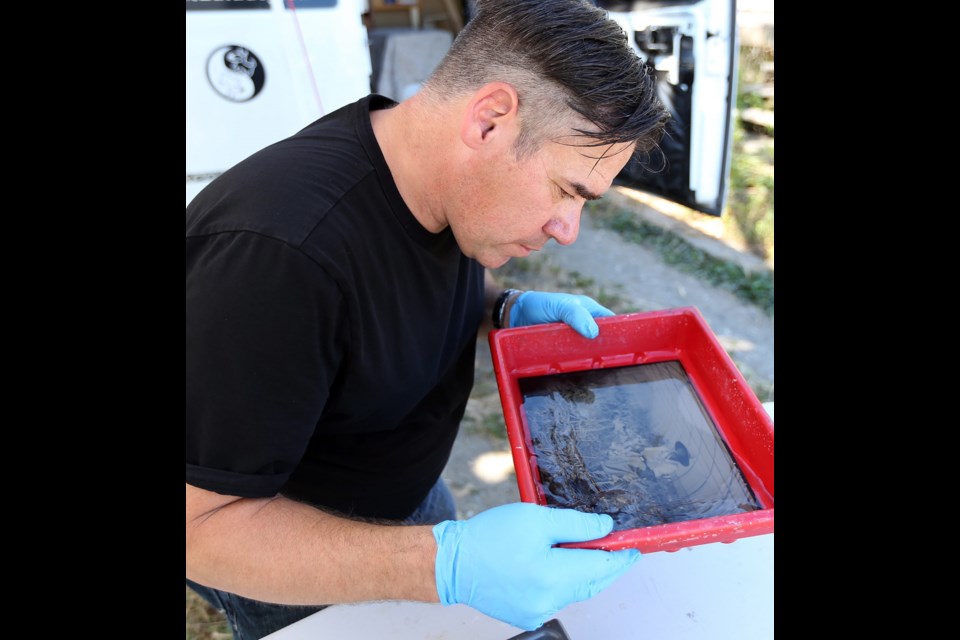Ken Miner specializes in wet-plate collodion photography, a process that requires a series of steps and ingredients to produce a single image. Here, Miner — who produces his images on glass or aluminum, rather than photo paper — explains his craft.
“Wet collodion is gun cotton dissolved in alcohol and ether, mixed with bromide and iodide salt. I pour that, which has a maple-syrup texture, onto a sheet of glass or aluminum plate. That goes into a bath of silver nitrate, and it sits there for about three minutes or so.
“Once it comes out of there, it is sensitized like a sheet of film. The plate goes into a light-tight box, which goes into the camera. The exposure is made while the plate is still wet.
“I go back into my darkroom, which is my van, and develop the plate right away. Once the developer finishes its action, which is 30 seconds to a minute, it is light-safe and can come back outside.
“Then I fix it in traditional film fixer, which takes it from a negative to a positive film image. Then it has to be washed and varnished, which is a whole other process.
“And then the 8x10 plate gets scanned on a high-resolution scanner.”
